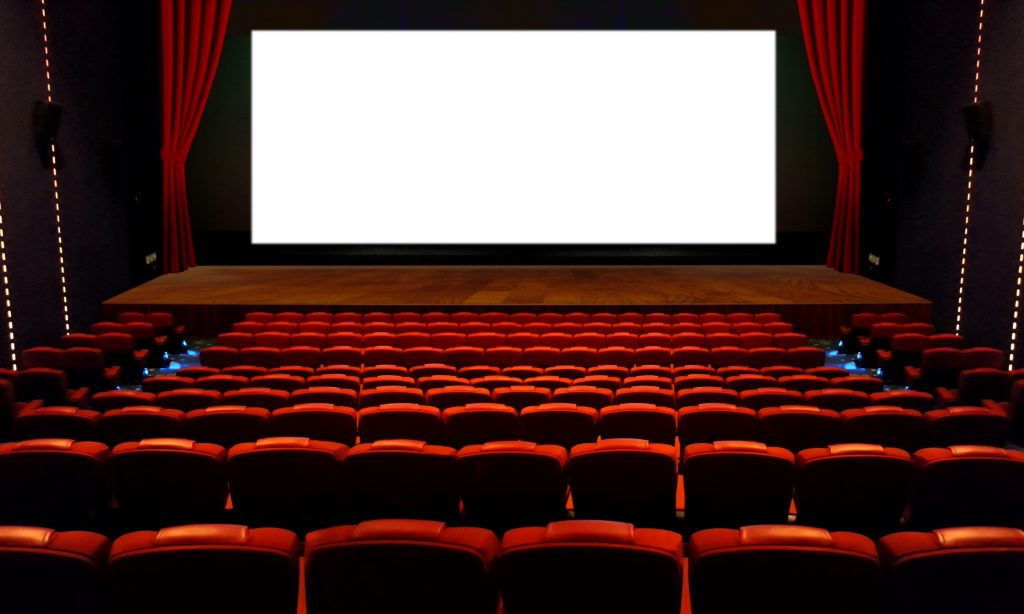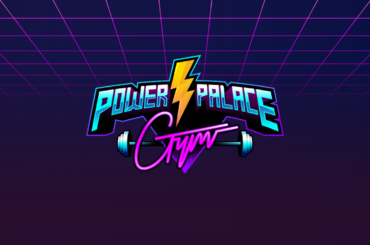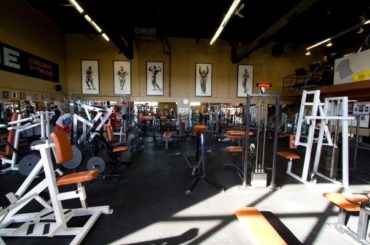It’s no secret that the movie theatre industry is in trouble. Last year attendance declined to a 23 year low. And while the foreign box office grows in revenue size much of this growth has been in countries like China which have restricted rules and only allow a small number of foreign films to receive theatrical distribution per year. Studios like Legendary Entertainment have allowed themselves to be purchased by Chinese owners in attempts to bypass these restrictions but these efforts are not scalable either.
The theatrical industry is in trouble and digital distribution is blamed to be the primary reason by almost all industry analysts — except me.
Now because I operate Zenither, a digital television carrier, it could be easy to assume that I want the theatrical market to die off. You would be mistaken to think that. I recognize the traditional path of content release from theatrical to home market creates important financial windows that allows the industry to exist. I also personally enjoy the theatrical experience when it is done well. I don’t think it is possible for someone who loves the film business to seek out the demise of the threatrical market because that also eliminates the theatrical experience, too.
While the ease at which consumers can now watch movies in their home via the web is certainly impacting the current business model of theatres I don’t think that is the core problem facing the industry. The problem is that the quality of the theatrical experience is not outweighing the ease of watching a movie at home with the food in your fridge or available for delivery from Grubhub or something.
So I’d like to share my thoughts on how theatres can keep the lights on in this changing digital world.
Increase the quality of the experience
MoviePass has received a lot of buzz and subscribers which may give people the impression a monthly subscription for movie tickets is the way of the future. I mean sure, from a consumer standpoint paying $20 a month to see as many theatrical showings as you can seems like a great deal for the consumers. And it is. But theatrical membership subscriptions using the MoviePass model isn’t a sustainable business and I think the majority of consumers understand that.
In my opinion the problem with movie theatres isn’t the price of admissions. Consumers will pay hundreds of dollars for tickets to entertainment, whether it is a live play performance or a Gwen Stefani residency in Las Vegas. So the problem is not the price of admission to movie theatres. The problem is what you get for the price that you pay.
Let’s take the El Capitan Theatre as an example. This is Disney’s flagship theatre here in Hollywood. It’s a historical grand theatre in the movie palace style. The motivation for anyone to attend this theatre over any other location is for the experience of it. Yet the seats are complete garbage.
Here’s a picture of folks sitting in these seats. (original source)

Notice how everyone is sitting so close together that their legs and elbows are touching. The folks in this photo may be smiling but if this was random strangers the mood would be different. I recently watched Christopher Robin at the El Capitan and it was incredibly uncomfortable to sit having my elbows bumping into strangers on both sides of me, while the seating itself has no neck support. There is nowhere to put your food items either, except the dirty floor. The El Capitan sometimes does double features and I cannot imagine sitting through two movies in a seat like this. My back and neck couldn’t handle it. This would be even worse if another patron attended who had horrible BO and I had to sit next to this person, elbows touching the entire time. I am positive this is an experience people have had before at the El Capitan theatre.
IF I was Disney I would reduce the number of seating and install better chairs. I’d then increase the price of tickets from $15 to $20. The next thing I would do is remove the Ghirardelli Soda Fountain & Chocolate Shop located in the Disney Store adjutant to the El Capitan & convert it into a full size commercial kitchen to provide gourmet food and fine drinks to guests, delivered to their seats in a style similar to the Alamo Drafthouse. I mean just look at a menu for a drafthouse location and then compare it to what the El Capitan serves; generic hot dogs wrapped in tinfoil, microwaved personal pizzas, low quality popcorn and bottled sodas. This is not a good representation of the Disney brand.
Theatres need to stop trying to make ticket prices be the most crucial component of revenue and instead focus on upselling items like food, drinks and related film merchandise. The experience is what needs to be sold. Food and beverage are an important part of that experience. You can’t have a high quality theatrical experience without high quality food.
I mean, if attendance is down that means they need to cater to the customers who are still going to the theatre for the experience of watching a movie on a big screen. They need to maximize the value of the customers still frequenting the theatre. The value isn’t there if the seats are uncomfortable and the food is of poor quality. I can get a better tasting pizza from any of the pizza joints next door to the El Capitan and that is a problem. As it stands right now I will never go back to the El Capitan again because the experience was not enjoyable.
The showing I saw of Christopher Robin had empty sections. Only the middle seat rows were filled. Disney could easily remove about half the current seats to install higher quality recliners with more personal space and it would be unlikely to negatively impact attendance at all. It’s more likely to improve the attendance by increasing the value of the tickets.
Some theatres seem to be understanding this. AMC has upgraded several of its locations with recliner seating and has waitstaff bring food to guests in their seats. Outside of Alamo Drafthouse locations these AMC theatres are my preference to attend in. However I have found the quality of the food to not be on par with the Drafthouse chain and this is something AMC needs to address.

I think pre-shows need a return as well. Alamo Drafthouse does this, and I noticed at the El Capitan Theatre they had one of the jazz bands from Disneyland entertaining guests prior to Christopher Robin. This is a good value add to the experience and something more theatres should do, too. But don’t stop with pre-shows; bring back classic matinee showings too, with special incentives to encourage people to go see a film on their lunch break.
Lastly I will talk about 3D films. 3D films has been a staple for the industry the past few years because it is a very unique experience that can really only be had properly inside a movie theatre. I tend to prefer to watch a film in 3D if given the choice. However this isn’t true for my friends or dates. Anyone who wears corrective glasses or contacts tend to be bothered by 3D films. I have often had to forgo the 3D experience to watch in 2D because my date or friend would feel sick watching in 3D. So while I think 3D is an important component of the survival of the theatrical experience we need to find a balance between 3D and 2D offerings.
VR Cinema Value-Add
There is emerging technology with virtual reality headsets integrated with a high quality reclining seat. I’ve seen demos of these devices at NAB Show and other locations in Vegas, and they tend to be used for providing simulated amusement park rides which I think is a limited use-case. I see an opportunity for theatres — especially mom and pop theatre chains in small towns across America — to utilize these units to offer multiple showings of different films at the same time. One customer could be watching ‘Incredibles 2‘ while another is watching ‘Christopher Robin‘. A more personalized cinematic experience is possible, but if several patrons are watching the same movie at the same time the devices could hook everyone into the same ‘virtual room’ to watch that film together. I think that would be a novel experience while also maximizing the limited space and seating available for these mom and pop theatre chains. And because these ‘VR Cinema’ units have much higher quality picture and audio systems than home units like the Playstation VR headset the quality of the experience would be worth paying for.
Novelty Experiences for Film Aficionados
The Montalban Theatre has a really cool gimmick called Rooftop Movie Club. They focus on popular and cult movies. They recently did a showing of Killer Clowns from Outer Space with a live orchestra playing music. Tickets cost $10 to $60 a seat. This is a novel concept that earns repeat business from a class of customer with the disposable income to participate in the events.
Drive in movie theatres are also making a resurgence of sorts. Consumers want interesting experiences for dates and family events. I think there is an opportunity for someone to combine new technology like BluTooth, wifi and mobile apps for ordering food and delivering the sound for drive in movies, which is fairly inexpensive to setup given you just need a field, a concession stand, a screen and a projector.
Movie theatres have relied too heavily on the films themselves being the product that drives ticket sales. Going forward the experience of watching the films at the theatre needs to be the product.
Conclusion
The theatrical industry has been around for over 100 years. Like any industry it must evolve to keep up with changes in the market and consumer tastes. The movie industry is declining in attendance. This is a trend that will continue and nothing can be done to stop it. As a result the theatrical film market must adapt by improving the quality of the movie experience to retain loyal customers who value seeing movies on the big screen. Provide them with the best big screen experience money can buy and they will still go to the box office.




